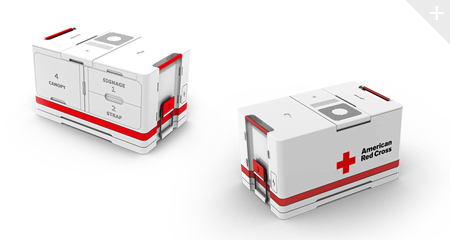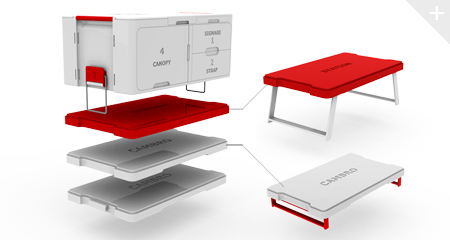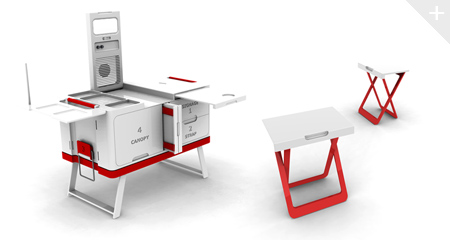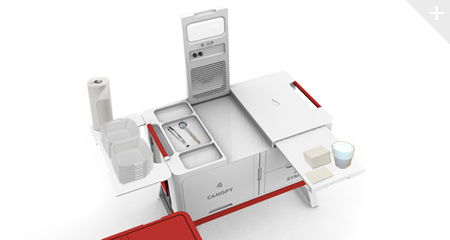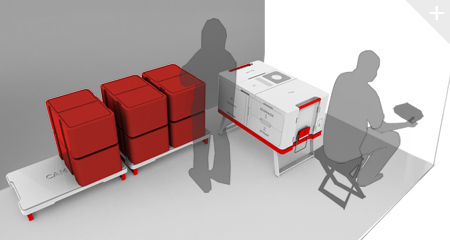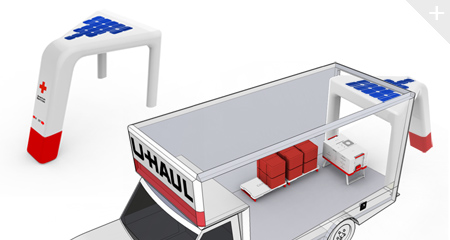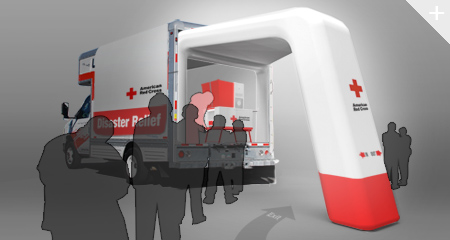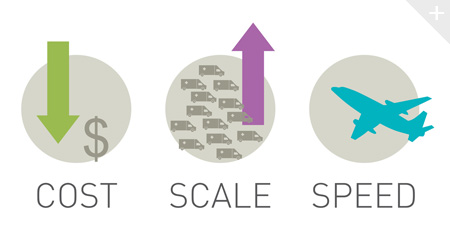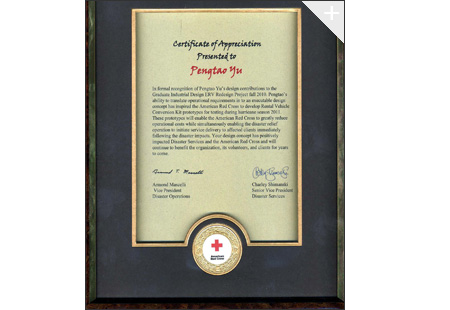Rental Vehicle Conversion Kit For American Red Cross

Designer Pengtao Yu collaborated with American Red Cross(ARC) to design the next generation of Emergency Response Vehicle(ERV). The solution dramatically increased ARC's response ability, response speed, at the same time, reduced the cost. The design had been made into prototypes by ARC and tested in the hurricane season 2011. It is also the winner of Core 77 design award 2011 and Spark concept award 2011.
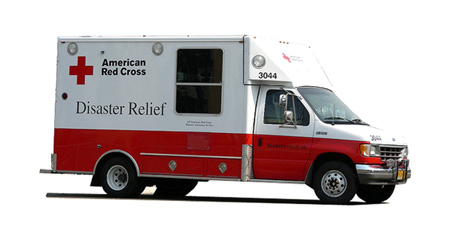
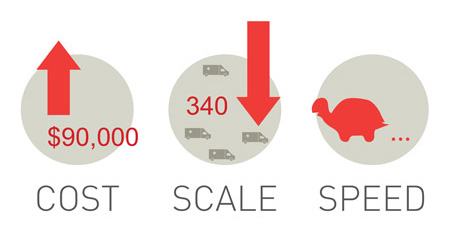

Certificate of Appreciation from ARC
In formal recognition of Pengtao Yu's design contributions to the Graduate Industrial Design ERV Redesign Project fall 2010. Pengtao's ability to translate operational requirements in to an executable design concept has inspired the American Red Cross to develop Rental Vehicle Conversion Kit prototypes for testing during hurricane season 2010. These prototypes will enable the American Red Cross to greatly reduce operational costs while simultaneously enabling the disaster relief operation to initiate service delivery to affected clients immediately following the disaster impacts. Your design concept has positively impacted Disaster Services and the American Red Cross and will continue to benefit the organization, its volunteers, and clients for years to come.
Issued by
Armond Mascelli,
Vice President of Disaster Operations
Charley Shimanski,
Senior Vice President of Disaster Services
Benefits to ARC
- The conversion kit has a very low initial and maintenance cost.
- It highly increases American Red Cross's food distribution ability during a catastrophe.
- Instead of driving the EVRs over country, the kits can be air shipped.
In a major disaster, millions need food and water. Thousands of response vehicles are needed in a short period of time to do this - many more than the American Red Cross, a major US disaster responder owns. When disaster strikes it usually takes over a week for the ERVs to be driven to the location, but the need for food and water is immediate. What's more, most of the year ERVs are parked, unused, in their home locations. This fleet of idle vehicles represents a huge investment (over $90K per vehicle) going to waste.
The challenge is to find an affordable solution that enables the Red Cross to respond to a large scale disaster in a short period of time.
- Molded numbers on each part of the kit help volunteers intuitively figure out the sequence of use
- Two big handles make it easy to be carried by two volunteers
- Half the size of an industrial pallet, the kit
is very easily stored in a warehouse between disasters
- Open the two locks on boh sides of the kit to release three foldable stand
- The kit becomes a workstation that brings easy access to supplies and tools the volunteers need to prepare the food and change the stock truck into a ergonomically friendly work space
- Two foldable stools are integrated in the kit
- Integrated fan and lights improve the ventilation and lighting inside the truck
- Integrated radio provides latest disaster news to Red Cross clients and volunteers
- All food are prepared inside the truck due
to hygiene
- The inflatable canopy can bu pumped up by using the integrated pump and battery.Thin film solar cells provides power for lighting and electronic devices in the kit
- The inflatable canopy draws the attention of
the crowd and illuminates during the night to provide lighting to the surrounding area.The canopy also controls the crowd flow by creating an entrance and exit for the serving area
rental vehicle conversion kit
tea-time tea steeper
lift for bernhardt design
moen loft bathroom workstation
fire relief respirator
Copy Right©20012 Pengtao Yu
